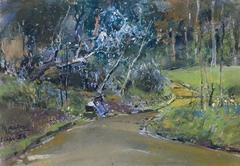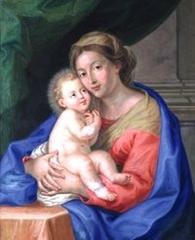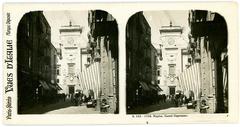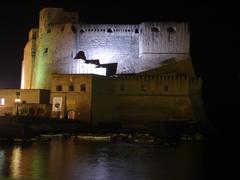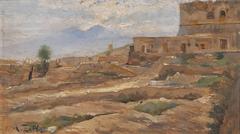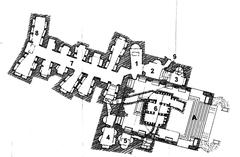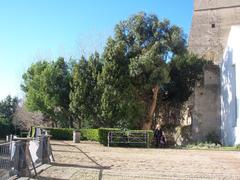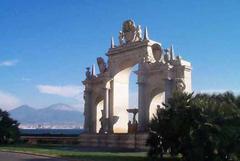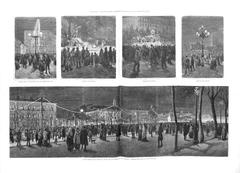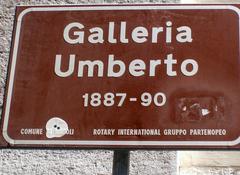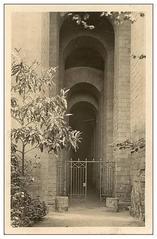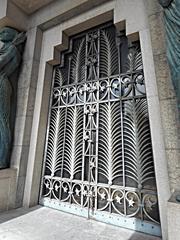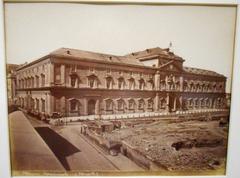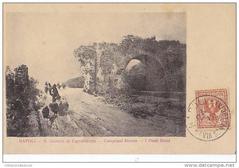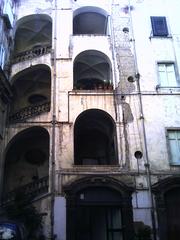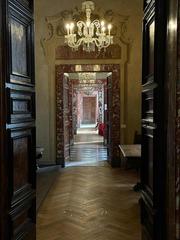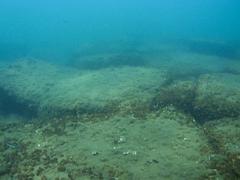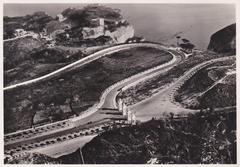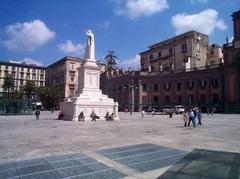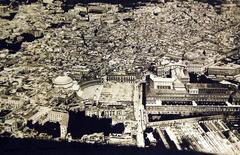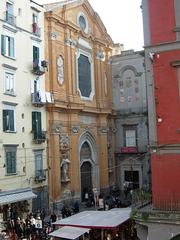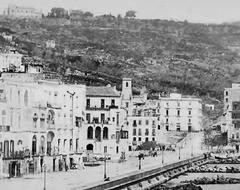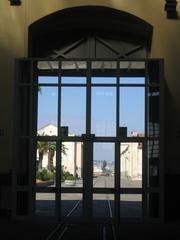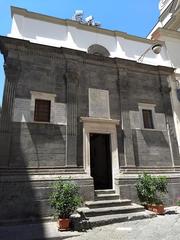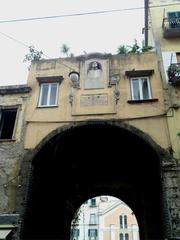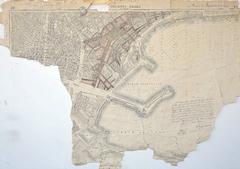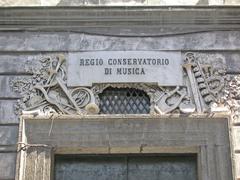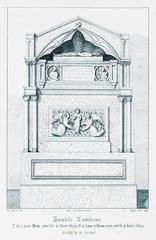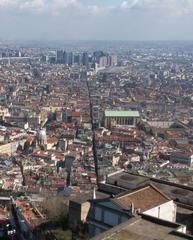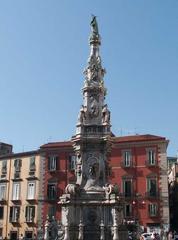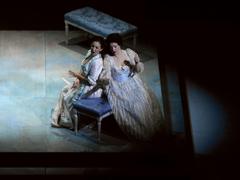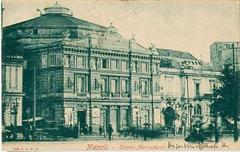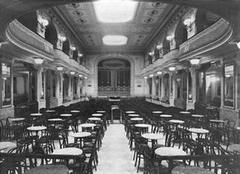Guide to Visiting the Pinacoteca del Monte della Misericordia
Date: 19/07/2024
Introduction
Located in the vibrant heart of Naples, the Pinacoteca del Monte della Misericordia stands as a testament to the city’s rich cultural tapestry and philanthropic spirit. This remarkable art gallery, often referred to simply as the Pinacoteca, boasts an impressive collection of masterpieces that span centuries, offering visitors a unique glimpse into the evolution of Neapolitan art. Established in the wake of the Black Death in 1348 by the charitable institution Monte di Pietà, the Pinacoteca’s origins are deeply intertwined with acts of compassion and community support. Over time, the institution’s mission expanded from providing financial aid to fostering artistic patronage, culminating in a diverse collection that includes works by luminaries such as Caravaggio, Luca Giordano, and Jusepe de Ribera. Today, the Pinacoteca is not only a treasure trove of Neapolitan artistic heritage but also a beacon of the enduring legacy of charity and cultural enrichment in Naples (source).
Table of Contents
- Introduction
- A Legacy of Charity and Art
- Visitor Information
- Travel Tips
- Nearby Attractions
- FAQ
- Conclusion
A Legacy of Charity and Art - The History of the Pinacoteca
The Pinacoteca del Monte della Misericordia is not just a gallery of artistic masterpieces; it’s a testament to the enduring legacy of a charitable institution deeply woven into the fabric of Naples. Its history is a captivating narrative of philanthropy, artistic patronage, and the ebb and flow of time.
From Charitable Mount to Artistic Haven (1348 - 1601)
The story begins in 1348, not with an art collection, but with an act of profound compassion. The Black Death, a devastating plague, ravaged Europe, leaving Naples reeling from its impact. In response to the widespread suffering, a pious woman named Laura Beatrice Guevara, along with other noblewomen, established the Monte di Pietà. This charitable institution, dedicated to Saint Mary of Pity, aimed to provide financial assistance to the city’s most vulnerable, offering loans secured by pawned possessions at minimal interest rates.
The Monte di Pietà quickly became a cornerstone of Neapolitan society, its mission resonating deeply with the populace. Over the following centuries, it flourished, its coffers growing not just from donations but also from shrewd investments and bequests. This financial stability allowed the institution to expand its charitable endeavors, further solidifying its place in the heart of Naples.
The Birth of an Art Collection (17th Century)
While the Monte di Pietà’s primary focus remained on its charitable mission, the 17th century marked a turning point. The institution began to receive artworks, not as investments, but as gifts. These donations, often from grateful recipients of the Monte’s generosity or from art patrons seeking to contribute to a worthy cause, laid the foundation for what would become a remarkable art collection.
Among the earliest acquisitions was Caravaggio’s masterpiece, “The Seven Works of Mercy” (1607). This monumental canvas, commissioned by the Monte itself, wasn’t just a stunning example of Caravaggio’s revolutionary style; it was a powerful visual representation of the institution’s core values. The painting, still housed in the Pinacoteca, serves as a poignant reminder of the Monte’s enduring commitment to compassion and social responsibility.
Expanding Horizons - Acquisitions and Patronage (18th - 19th Centuries)
The 18th and 19th centuries witnessed a period of significant growth for the art collection. Donations continued to pour in, encompassing a diverse range of styles and periods. The Monte di Pietà, recognizing the cultural value of its burgeoning collection, embraced its role as an art patron. It commissioned works from prominent Neapolitan artists, further enriching its holdings and contributing to the flourishing art scene of the city.
Notable acquisitions during this era include works by Italian masters such as Luca Giordano, Francesco Solimena, and Ribera. These paintings, often imbued with religious themes or depicting scenes from classical antiquity, reflect the prevailing artistic trends of the time. The collection, however, wasn’t limited to Neapolitan artists. It also began to incorporate works from other Italian schools, gradually expanding its scope and offering a broader perspective on Italian art history.
From Storeroom to Gallery - The Birth of the Pinacoteca (20th Century)
For centuries, the Monte di Pietà’s art collection remained largely inaccessible to the public, housed within the confines of its palazzo. However, the turn of the 20th century brought about a change in perspective. The institution, recognizing the importance of sharing its artistic treasures, embarked on a project to create a dedicated gallery space.
The Pinacoteca del Monte di Pietà, as it was then known, finally opened its doors to the public in 1975. This marked a pivotal moment, transforming the collection from a private treasure to a public resource, accessible to art enthusiasts and scholars alike. The gallery, housed within the historic Palazzo Monte di Pietà, provided a fitting backdrop for the masterpieces it held, its grand architecture echoing the grandeur of the art within.
Visitor Information
Visiting Hours
The Pinacoteca del Monte della Misericordia is open to the public from Tuesday to Sunday, 9:00 AM to 7:00 PM. It is closed on Mondays and public holidays. Visitors are encouraged to check the official website for any changes in visiting hours.
Tickets
- Adults: €10
- Students and Seniors: €7
- Children under 12: Free
Tickets can be purchased online via the official website or at the entrance.
Accessibility
The gallery is wheelchair accessible, with ramps and elevators available for ease of movement. Audio guides and guided tours are also available in multiple languages.
Travel Tips
Best Time to Visit
Mornings are generally less crowded. Weekdays are preferable to avoid the weekend rush.
Photography
Photography is allowed but without flash. Certain areas may have restrictions, so it’s best to inquire at the entrance.
Guided Tours
Available upon request. Booking in advance is recommended.
Nearby Attractions
Naples Cathedral (Duomo di Napoli)
A short walk from the Pinacoteca, this stunning cathedral is a must-visit.
Naples National Archaeological Museum
Home to one of the most extensive collections of Greco-Roman antiquities.
Sansevero Chapel Museum
Famous for its intricate sculptures and the enigmatic Veiled Christ.
FAQ
How long does a visit take?
Most visitors spend about 1-2 hours exploring the gallery.
Is there a gift shop?
Yes, there is a gift shop offering souvenirs, books, and art prints.
Are there any special events?
The Pinacoteca hosts temporary exhibitions and cultural events. Check the official website for the latest updates.
Conclusion
The Pinacoteca del Monte della Misericordia stands as a testament to the enduring power of art and the legacy of a charitable institution. Its collection, spanning centuries and encompassing a diverse range of artistic styles, offers a captivating glimpse into the artistic heritage of Naples and beyond. As you wander through the gallery’s halls, take a moment to appreciate not just the beauty of the artworks but also the remarkable history they represent.
For more information or to plan your visit, check out the official website here. Don’t forget to follow us on social media for the latest updates and events!
References
- Exploring the Pinacoteca del Monte della Misericordia - History, Visiting Hours, and Tickets, 2023 (source)
